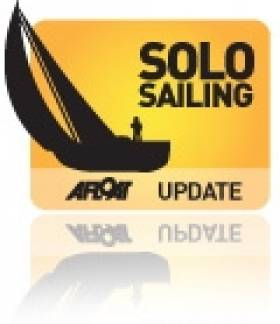Displaying items by tag: Steve White
Steve White announces bid to break the 'Westabout' Solo Circumnavigation Sailing World Record
Professional sailor Steve White has announced his intention to break the current world record for circumnavigating the globe single-handed, non-stop the "wrong way", against the prevailing winds and currents. Steve will be sailing a Volvo Open 70, which would usually be crewed by ten people. Taking place this winter, the attempt will mark the 40th anniversary of the original record set by Sir Chay Blyth (CBE BEM) on 'British Steel', who embarked on the epic journey described by The Times in 1970 as the 'Impossible Voyage'. The current record for completing the 22,000 mile course is 122 days, 14 hours and 4 minutes, and is held by Frenchman Jean Luc Van Den Heede.
Steve White says, "After the amazing experience of the 2008 Vendée Globe, it seemed like the right time to focus my attention on this record that I have been thinking about for a long time, and which fits in nicely before the next Vendée Globe in 2012. The record is acknowledged as probably the hardest and certainly the most gruelling record in sailing, and I am under no illusions about the enormity of the task in hand, both of sailing upwind and against the current in the Southern Ocean, and about the power and size of the boat we have chosen. Jean-Luc Van Den Heede is a legend and his record will be tough to beat, but I think it is achievable"
Sir Chay Blyth CBE, BEM commented, "It's wonderful that Steve is planning to attempt what many regard as the ultimate sailing challenge. Hundreds have completed the voyage following the classic Eastabout route but doing this in reverse is a quantum leap removed, which is why only 5 people including Mike Golding and Dee Caffari have tried it. It takes a special character to tackle the trip and Steve is an extremely experienced yachtsman who I believe has the right skills, tenacity and determination to set a new World record." When asked if he would be tempted back to re-trace his footsteps Chay said, "Not a hope in hell."
The team at White Ocean Racing are currently looking for potential sponsorship partners who are interested in aligning themselves with such an outstanding example of human endeavour, which will attract massive UK and international media interest, and capture the imagination of people from all walks of life around the globe. The rewards of title sponsorship are exceedingly high, as this is a unique and steerable opportunity.
Steve added, "I have long pondered this record since reading both Chay's and Mike Golding's books on their respective attempts. With a very successful Vendée Globe behind me, and a team with a wealth of experience now in place, I am confident I can do this record justice. I really am more excited about this than I have been about anything else, and I am very much looking forward to crossing the start line. I will leave between October and December this year, depending on the arrival of a suitable weather window, and how soon we attract a sponsor".
For further information visit: www.whiteoceanracing.com























